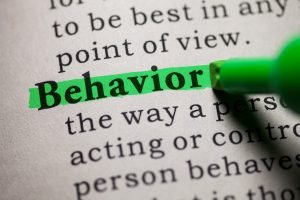Unsurprisingly, there’s quite a lot that goes into being a successful investor. Learn what behavioral biases are and how they could be impacting your investing!
 A South Korean company, Shinil Group, claims it found a sunken Russian ship over 100 years old. It’s holding 200 pounds of gold bullion and coins. What, can we imagine, are their investors doing right now?
A South Korean company, Shinil Group, claims it found a sunken Russian ship over 100 years old. It’s holding 200 pounds of gold bullion and coins. What, can we imagine, are their investors doing right now?
Or, the better question may be, how does this make them feel? Though we all want to keep an even keel, we are more wired for behavior than rational thought. Plus, there are a few more facts to the story.
Rights to the booty at recovery would be in question. This very ship had claims from another company of its finding in 2000. But, when it couldn’t make the surface, then-happy investors lost everything.
Does this factor into Shinil’s happy dance? You bet. We place a much higher value on losses than gains.
It’s not a foolish emotion. It’s science. Our memories are long, and our behavior follows it. It is as much a part of investing as reading a P&L.
We may not have control over our behavioral biases. Understanding them keeps us from making sloppy errors. Here are a few to know.
Table of Contents
Confirmation Bias-We Look for the Evidence We Want
Once we make a decision, it’s damn hard to talk us out of it. We’ll also cling to every piece of information which supports it.
We go a long step further by ignoring any information that does not support it. This famous bias is behind NASA’s decision to launch the doomed Challenger. There were reams of memos about the O-ring problem before the disaster. Sound decisions need a base. Weighing options, reading data, and discussions with those of varying opinions strengthen our neutrality.
Read more here about how this bias affects investing.
Self Attribution Bias-We Aren’t as Good as We Think
 Think Enron. Pushing the boundaries of investing was all in a day’s work. Many would shake their heads at the dedication of the board as the ship was sinking. Their absolute belief they knew more than everyone else is cognitive bias gone wild. Of course, we now know the company was building a house of cards.
Think Enron. Pushing the boundaries of investing was all in a day’s work. Many would shake their heads at the dedication of the board as the ship was sinking. Their absolute belief they knew more than everyone else is cognitive bias gone wild. Of course, we now know the company was building a house of cards.
But at the time, the board thought immediate financial gains was work of their genius.
And the enormous losses were someone else’s fault. Celebrate success, and learn from mistakes. Nobody wins all the time.
Ambiguity Effect-We Have to Know the Outcome
If we know the future with an investment, well, that’s good news, right? We know the yield on a savings account. Will this make us wealthy? No.
Our bias toward ambiguity serves to make us prefer known results rather than unknown. The truth is, most of us can handle some risk.
If not, no one would put a penny in a portfolio. A sound investor can mitigate unknown results with knowledge and experience of probability.
Pre-Innovation Bias-This Product Will Change Everything
In 1959, the US Postmaster General made a declaration that our mail would go around the world on missiles. The term was “rocketmail”.
His promise was our letters would zoom to mailboxes before there were footprints on the moon. A few years later, Time Magazine had a theory about remote shopping. “…while entirely feasible, (it) will flop”. But did you hear about this thing called the Internet? Hrm. Sounds like remote shopping.
We can grin now, but those who were prophesying had absolute belief in their words. As investors, we need to question everything.
Information on a product’s shortcomings should be available too. Know everything before promoting. We all know pesky flaws often show up at back doors for big bites.
Distinction Bias-We Make Bad Choices
Investors must make choices every day for themselves or clients. When comparing options side by side, bias makes our brains kinda stupid.
When we see the lowest priced car on the lot, our mind tells us to buy. When we compare it to all the other vehicles, it’s the best deal.
Then, we get it home and find it has none of the features for which we were looking. Every time we’re unhappy with its lack of convenience we tell ourselves what a great deal it was.
Comparing options side by side dismisses our attention to unique qualities.
Products should stand on their own merits. Only then can we count on our best decisive actions.
Loss Aversion-When Losing is Everything
 An employer who threatens to fire their subordinates is playing to this general bias. We all want to avoid losing.
An employer who threatens to fire their subordinates is playing to this general bias. We all want to avoid losing.
We remember our losses in much greater detail than our wins. The energy and time we spend avoiding loss consume what we need to find success.
The aversion is prominent in both economics and investing. We will feel stronger emotions about losing $100 than a $100 windfall.
So, investors work hard to avoid any loss. The truth is, losses are part of the job. Learning to accept them gives investors a much clearer path.
Finding winning products becomes the priority. Mitigate the loss bias with these free tools.
Mental Accounting-How We See Money and Investments
We treat investments in different ways, and we do the same with money. The way we see our paycheck in comparison to how we look at an inheritance is mental accounting.
And, we’ll see the money as somehow different when it comes to investing. We can also attach our bias to stocks given us, or employee investment programs, too.
We tend to favor some whether they are sound products or not. Diversification can suffer. We need to choose on merits rather than bias. Learn more about top investment strategies.
Behavioral Biases Don’t Control Us
You may think you have no chance against the behavioral biases we all have. It’s important to note they don’t control us. They influence us.
Our quick reacting brain wants to short-circuit thinking and get right to the behavior. Taking time to consider options is the heart of good investing.
We have more solid investing tips here. Don’t forget, even if you start investing with the money you have you can start creating wealth through micro investing.